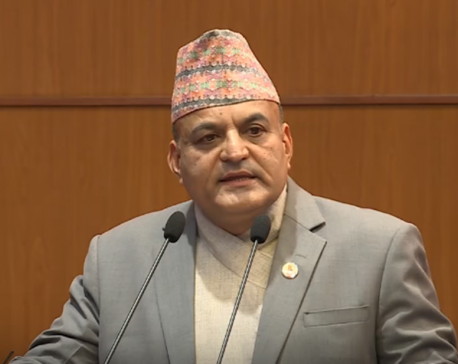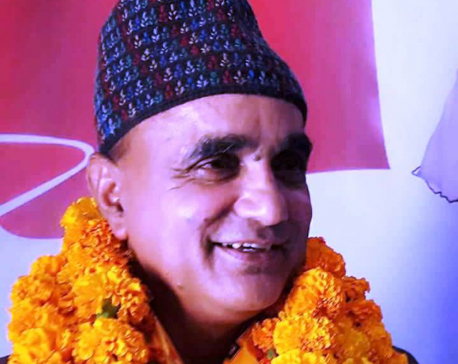
OR
Opinion
A Peep into the Neuro System of the Leader
Published On: December 12, 2022 09:00 AM NPT By: Fr. Augustine Thomas, S.J.


Fr. Augustine Thomas, S.J.
Father Augustine Thomas has a PhD in ‘Leadership Studies in Organization Development’ and currently serves as the Principal of St. Xavier’s College, Maitighar, Kathmandu.news@myrepublica.com
A holistically formed leader is able to understand the people with immense compassion and yet not get driven by emotions. He/she is able to read the scenario and make decisions following the ethical standards and, importantly, carries no grudge or ill-feeling against anyone due to a disagreement in the organization.
The psychology of leaders is a world worth understanding. There are leaders who are marvelous in planning and executing an event, setting up systems in the organization, and making quick and sound decisions but the same person can be demotivating and demeaning to colleagues or even unable to see the pleasant greetings from others.
Another type of leader is ‘land mower leader’ who micromanages everything in the organization. Some may be a terror in the office but pleasant people to talk to when met outside. There are some leaders who spend their entire time in public relations and building networks but have very little analytical and decision-making skills.
Though what we get to see or hear is external, the real workshop behind the action and narratives of the leader is his/her neuro functions.
Studies in neuroscience have brought some breakthrough conclusions about behavioral change and suggested new perspectives to leadership studies. An article published by Richard E Boyatzis et al narrows down the studies to a potential conclusion. Different parts of the human brain and cortical network are activated in different situations. Two prominent neural networks that play a crucial role in leadership are Task Positive Network (TPN) and Default Mode Network (DMN).
TPN is in the driving seat when a leader is engaged in problem-solving, being analytical, decision-making, and executing a task with perfection whereas DMN is active in social cognition, ethical and moral decision-making, emotional application, and enhancing relationships while exercising leadership roles.
Interestingly, the networks are antagonistic to each other. And to exercise leadership effectively, one must have both networks at play in a balanced manner. This regular shift is constructive. The education and scholarly advancement of a leader can only address the TPN part of leadership but the emotional, ethical, and relational aspects come from the inner self of the person.
Asia in general and Nepal in particular has a context where relationships and social norms have immense value. The celebration of Bhaitika, father’s day, and mother’s day, among others, shows how strongly relationships are cared about. Picking up a conversation with a stranger on a bus and building connections on the spot is a common practice. The culture we live in is driven by the relationship mode (DMN). If a greater number of offices are seen as disorganized and without proper systems, one reason could be that they are not trained to be organized and another reason is that the inner drive of the individuals at such workplaces is predominantly in relationship mode. In such a scenario, one’s close circle is important, productivity is often compromised and systems bent.
Regular switches between the default mode and task mode make a leader an effective one. Most of the successful and long enduring CEOs and managers acquire the ability to switch from the task mode to the relationship mode depending on the scenario. Certain internal processings can help those in leadership positions to be efficient in their roles.
Identify
Human behaviors often get into an automatic mode. For example, a meal is consumed with minimum attention to the taste of the food. Similarly, a leader can lead an organization in an automatic mode, not knowing how he/she comes across in the workplace.
First and foremost, the person should take time to understand what is the predominant mode he/she is in, looking back at the activities and decisions of the day and how the day at the workplace was carried out. How many analyzed decisions were made? Did I over-consider or give no importance to the sentiments of those around me? Was I decisive or dillydallying? By paying attention to the decisions made during the day, the leader can identify if the dominant mode of the leader is TPN or DMN.
Aware
A term that is often used for any behavioral change is ‘be aware’ or ‘be mindful’. This ancient magic word still is the most powerful solution for an aspiring person to be an effective leader. If the person knows the dominant mode that he/she is in and that one mode can suppress the other, an awareness state will slow down or even stop the suppression. The suppression part is that one needs to take care and that can be done with an effective two-minute mindful pause. Slowing down and pacing the executive moves will stop the automatic behavioral patterns.
Holistic growth
It is hard for an individual to grow in a fragmented form, focusing on certain aspects of life only. The job of one in a leadership position requires the person to have the ability to analyze critically and impartially, make smart decisions, and execute those decisions with passion. However, it doesn’t end there.
A holistically formed leader is able to understand the people with immense compassion and yet not get driven by emotions, able to read the scenario and make decisions following the ethical standards and, importantly, carrying no grudge or ill-feeling against anyone due to a disagreement in the organization. This calls for the holistic development of the leader. It's in the holistic growth the TPN mode and DMN mode that take rapid turns in making way for each other for effective function and then the neural antagonism is controlled.
“A stitch in time, saves nine.” A right move in behavioral change in time can enhance one’s professional life altogether.
You May Like This

Set the Tone for Post-leadership Reality
Managing oneself effectively as a leader sets the tone for a post-leadership life. ... Read More...

NC leader Surendra Raj Pandey nominated as National Assembly PP leader
KATHMANDU, Jun 6: Main opposition Nepali Congress has nominated Surendra Raj Pandey as the parliamentary party (PP) leader of the... Read More...

UML leader Kandel elected as PP leader in Province 6
SURKHET, Feb 8: CPN-UML leader Yamlal Kandel has been nominated as Parliamentary Party leader for the Province-6. ... Read More...







Just In
- NRB to provide collateral-free loans to foreign employment seekers
- NEB to publish Grade 12 results next week
- Body handover begins; Relatives remain dissatisfied with insurance, compensation amount
- NC defers its plan to join Koshi govt
- NRB to review microfinance loan interest rate
- 134 dead in floods and landslides since onset of monsoon this year
- Mahakali Irrigation Project sees only 22 percent physical progress in 18 years
- Singapore now holds world's most powerful passport; Nepal stays at 98th











Leave A Comment